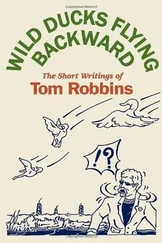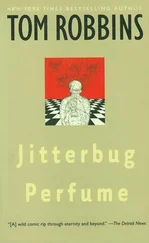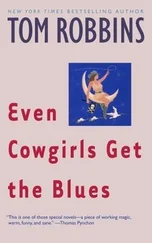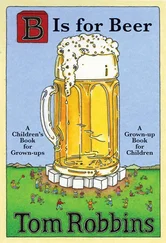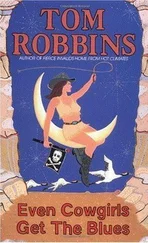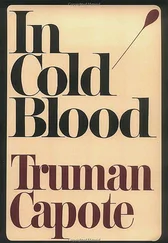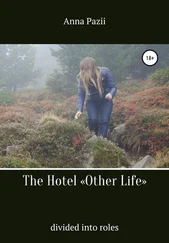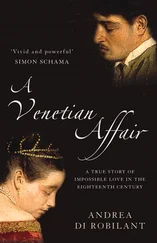What one notices first about alleys in the Fan is that they’re cobblestoned, an antiquated method of paving that grants them a quaint old European quality — and when moonlit, an illusion of being studded with golden marshmallows (giving rise to thoughts of sweet-potato pudding — or Oz). Next, if the season is right, one is likely to discover how sensuous, coquettish even, an alley can be, for these Fan alleys are lined with fragrant honeysuckle, climbing roses, dogwood, lush magnolia, and showy va-va-vooms of violet wisteria: sufficient allure to distract the eye from rubbish cans and the nose from spots recently favored for baptism by urine.
Further, what makes the Fan alleys unusual if not unique are the little two-story carriage houses one passes every twenty yards or so along one’s route. In the nineteenth and early twentieth centuries, gentry kept their buggies and horses on the ground floors of these adjunct buildings, while the upper floors were living quarters for servants. Nowadays, the ground floors typically garage bicycles and sports cars, while those above are rented out as studios for painters, sculptors, poets, and musicians.
The alleys become all the more interesting after nightfall, when they softly resonate with stray disembodied fragments of music (live or recorded), intellectual discourse, dog-bark, couple-squabble, and woo-pitch, not to mention the even less tangible secrets that seem to seep from the shadowed crannies, the walled gardens, and the back bedrooms of the decorous houses that face city streets with feigned nonchalance, as if oblivious of, or at least indifferent to, the eccentric little rivers of alley life — incongruously cultured, intermittently raw, and potentially threatening — that course stealthily behind them.
On many a hot, sticky summer night, when a restless Richmond felt like the interior of a napalmed watermelon, I’d leave work at midnight and walk the alleys of the Fan until dawn, half expecting Patricia’s armed husband to leap out at me from every spooky nook. On my nights off (Tuesdays and Wednesdays), I’d hang out at Eton’s, playing Ella Fitzgerald’s recording of “But Not for Me” (my God, what an elegantly poignant tour de force!: it makes self-pity sound like a refined condition, makes the lovelorn feel like a noble tragic hero rather than a poor dejected sap), over and over on the jukebox until closing time (also midnight); then commence my cobblestone ramble, occasionally with fellow alley enthusiasts for company.
At some point in late 1959, Eton’s abruptly fell out of favor (maybe it had just become too fashionable) and the hip scene (except for the gay boys) moved almost en masse diagonally across Grace Street to the Village Inn, a funkier joint run by amiable Greeks who made fine submarine sandwiches and had never heard of Ella Fitzgerald. (The Village also had a jukebox, of course, but the record selection, lacking the advantages of superior gay taste, was less sophisticated, its amplification poor, and it quietly starved to death for lack of quarters.) My friend B.K. was now renting studio space atop a carriage house in the alley directly behind the Village, and it was in that studio that “the Baboon Family” gave its one and only, though locally legendary, performance.
It was on a Wednesday evening in 1961 that B.K., his diminutive powder keg of a girlfriend, Mary Lou Davis, and I were moping around in his studio, bored, broke, and feeling in sore need of alcoholic stimulation. It wasn’t long before the solution became obvious. We stripped naked, painted our buttocks liberally with red acrylic, and climbed up in the carriage house’s large wooden rafters — after first having torn pages from B.K.’s sketchbook to make hasty flyers ( See the Baboon Family, 10 o’clock, Admission 25 Cents ), which we persuaded a passerby, a good-natured acquaintance, to distribute in the Village.
Word spread. By ten-fifteen a sizable crowd had climbed the outside stairs to gawk at the red-assed “baboons” who, gibbering, grunting, and scratching themselves, were cavorting among the exposed beams overhead. The problem next became how to get people to leave. It’s tiring being a faux baboon.
After an almost excruciatingly long time, however, the novelty (I hesitate to say “excitement”) wore off. Spectators, many muttering and shaking their heads, filtered back to their booths, bar stools, and beers; and B.K., Mary Lou, and I descended, finding more quarters in our admission jar than the Village jukebox swallowed in an average month. After washing off our bumptaratums and getting dressed, we were able to go buy a bottle of cheap champagne, which we sipped in a celebratory mood, like actors toasting their success after opening night of a hit Broadway show.
Maybe it’s not unusual that a struggling artist and an aspiring writer who’d yet to find his literary voice would paint their butts red and cavort nude in public, but why, you might wonder, would a nice young Southern girl participate in such a shameless display? Well, you would have had to have known Mary Lou Davis (aka the Human Wrecking Ball) — and had you lived in the Fan District in the last half of the twentieth century, you very well might have known her.
Mary Lou looked harmless enough. She was petite, as I’ve said, and rather attractive (long brown hair, fiercely expressive eyes, slender waist, and one of those up/down, up/down seesaw rumps from the Marilyn Monroe Memorial Playground); although in middle age she came to physically resemble the nickname she earned by her propensity for breaking up marriages, friendships, bank accounts, and attempts at serious conversation. The real surprise, I suppose, is not that she would grow over time to look like a wrecking ball but that, after numerous suicide attempts, accidental overdoses, falls, catfights, screaming scenes, and brushes with the law, including six months behind bars (Mary Lou wasn’t just a drama queen, she was a drama empress, a tumultuous Cleopatra barging down a Nile of trouble), she actually survived to reach middle age. She didn’t live past it.
In any case, she was a reasonably cute young thing from a respectable family down in slow little peanut-flavored South Hill, Virginia, when she arrived in Richmond to enter nursing training at Stuart Circle Hospital. It didn’t take her very long (it must have been some perverse kind of homing instinct) to discover the Fan District, however, and then it was good-bye bedpan hello bedlam. Late one afternoon not long after moving to the Fan, she strode into Eton’s, placed her hands on her hips, looked around the crowded room and asked, loud enough to be heard over the chatter and the jukebox, “Anybody here want to fuck?”
To appreciate the full impact of that brazen invitation, the reader must realize that in the fifties the so-called f-bomb really did have an explosive quality, and it was never, ever detonated in public. I mean, there were elements in America still reeling from Clark Gable’s having uttered “damn” at the conclusion of Gone With the Wind . Nowadays, “fuck” reverberates quadraphonically in every multiplex in every mall in the land, and supremely untalented comedians compensate for lack of wit by using the word at least four times per punch line, all of this thoroughly robbing the once-forbidden expression of its deliciously nasty sexual power. Prior to Mary Lou, I had never heard a female say “fuck,” even in private, and I was twenty-six or twenty-seven at the time.
Well, for a long full minute, it was as if a paralyzing gas had enveloped Eton’s. Nobody moved, nobody spoke. Then, the gay men commenced to titter, and the straight guys — those unaccompanied by girlfriends or wives — started to steal looks at one another in a peculiar, nervous, searching way as if to see who, if any, among them would answer or at least nod in the affirmative and make to accompany Mary Lou out the door. I’m unsure if anyone did. At least not immediately.
Читать дальше

